Notes
Sarah Stacke: Love From Manenberg
Love From Manenberg is not about gangs, poverty, or drug abuse, even though all of those things exist there. It is about how messy life is, and about the relationships photographer Sarah Stacke has made and maintains in this Cape Town suburb. This is the first installment in an ongoing series.
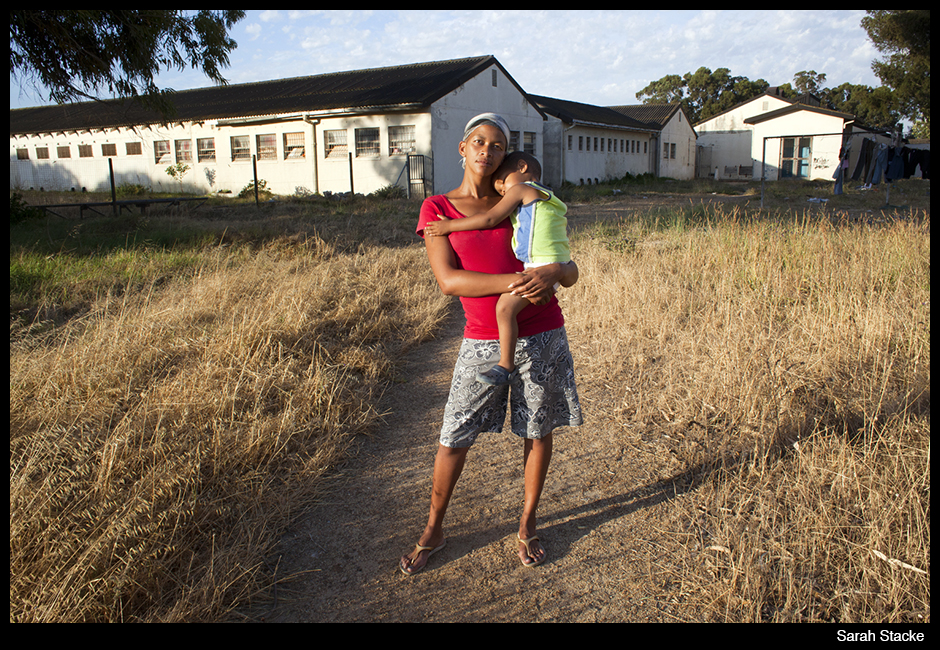
Naomi and her two-year-old son Shaquille at the ARK, a center for rehabilitation.
Love From Manenberg is about how messy life is. The story itself does not adhere to emotional or geographical boundaries. Love From Manenberg is about relationships and the understanding that nobody is perfect all the time, it is what is in the heart that binds us. Since beginning this series in 2011, many individuals have opened their lives and shared their community with me, but I am particularly grateful to the Lottering family. The title, Love From Manenberg, is in part a reference to the love the Lottering family has for each other. The title also aptly describes the relationships I have formed with those I have photographed, and others, while working in South Africa. Where this ongoing series might take me – or Ishmael, Naomi, Debby, and their family and friends – in the coming years is as unpredictable as life itself.
Ishmael Sondag and I met at the Sea Point Promenade in Cape Town when the light was golden and fighting the night’s chill. He was sitting on a low concrete step in front of a cracked yellow wall, his dark skin illuminated by the tranquil rays of the winter sun. His shadow was squeezed between his body, the wall and the step, like a paper doll, protecting him from the damp surfaces. He wore a black felt cap, a brown corduroy coat, and checkered purple pants made of thin cotton. Under a pair of Adidas flip-flops held together by the last strands of Velcro, faded black socks covered his feet. Ishmael watched as my pace slowed from a run to a jog, and finally a walk that stopped in front of him. “Hello,” I said predictably, as I fumbled to take the small headphones out of my ears. His questioning eyes took in my red face and pale body, dressed in running shorts and a long sleeved shirt. Two clips held my short blonde hair back, while the bottom flipped innocently outward. “Do you mind if I take your picture?” I asked.
“No, I don’t mind. Alright. It’s okay,” he said.
I unwrapped the strap of a small camera from around my wrist and knelt down to compose the image. I moved around Ishmael looking for the best angle, like a bird pecking for crumbs. Finally my shadow reached across the ground in front of me and rested on the wall next to Ishmael. I wondered if the shaded outline of myself could somehow work in the photograph, a symbol of my presence and my step into the fraught history of image-making on the African continent.
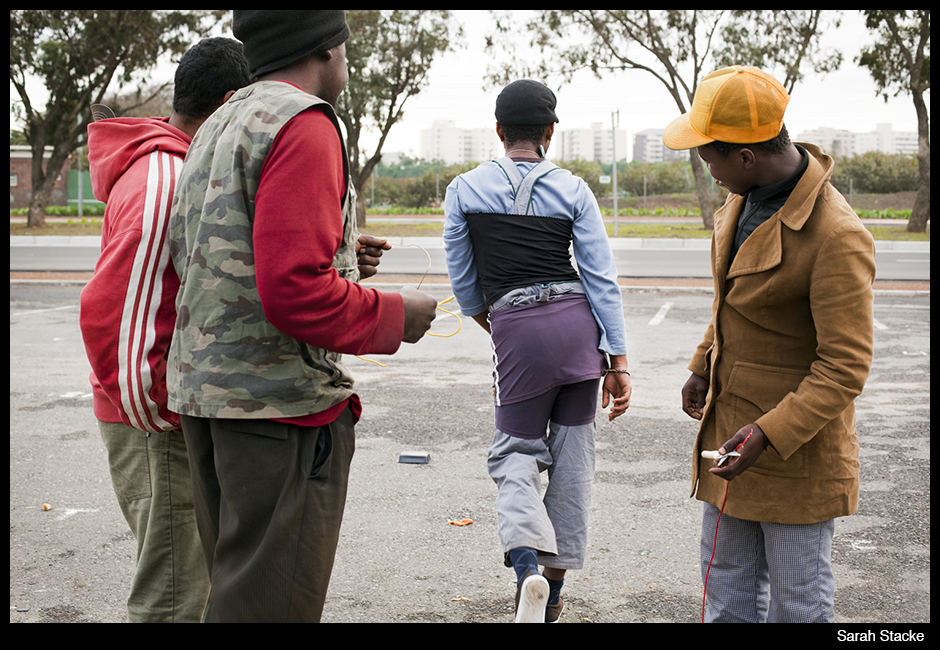
Ishmael showing off goods he acquired through “skarreling,” the rummaging activities of men and women who are without shelter and who rely on other people’s material waste to survive.
I had arrived in Cape Town in June 2011 to research the visual archive collections at the University of Cape Town. The research was related to my graduate degree focused on photographic representations of sub-Saharan Africa and the diaspora. I also wanted to create my own body of photo work while there, yet after two weeks of carrying my camera with me everywhere, I had only succeeded in capturing sunsets and other snaps. An hour before I met Ishmael, I stood in front of the bedroom mirror of my rented flat in Tamboerskloof and put on my running clothes. Table Mountain, the geological structure that has overlooked centuries of colonial conflict, loomed in the windows behind me.
“If somebody doesn’t want to have their picture taken, they will let you know. You can do this. You have to do this. You’re a photographer.”
For the next two months Ishmael, a 28-year-old aspiring fashion designer who speaks six languages and who recently began living on the streets, shared his world with me. In return I helped him with groceries, a pair of shoes, rides, and swatches of material. When I left Cape Town he was inside a tailor shop sewing a one-off job with the possibility of more. Four and a half months later when I returned, he had disappeared; he was arrested for tik (meth) and his friends and I have never seen him again.
Naomi Lottering – tall and pretty with bright brown eyes, long nails, and a naughty laugh – told me he was gone. She was a part of his crew on the streets. I had met and photographed her before, but I only knew her as Akonah’s girlfriend, rowdy yet shy, and a sex worker. After Ishmael’s disappearance our relationship deepened. As women, we had things in common that Ishmael and I never would. With Naomi at the center, the story grew more complex and personal.
Naomi is from Manenberg, a suburb of Cape Town that was established in the Cape Flats during the late 1960s by the apartheid government as an area for Coloured families. Marginalized by culture, history and geography, most of Manenberg’s estimated 70,000 residents live in overcrowded and problematic conditions. Twenty years since the end of apartheid, Manenberg is largely recognized for its social problems, which include unemployment, crime, drug abuse, and relentless gang violence. Opportunities for residents to change or improve their circumstances remain few and far between.
Love From Manenberg was born.
Naomi started spending nights on the streets in her early teens. It was an escape from boredom and constraints; it was a chance to live without the predictability of starting and ending a school day, dinner at home, and sleeping in bed next to her little sister, Debby. She experimented with alcohol, drugs, and sex, and the temporary escape they provided drew her further and further away.
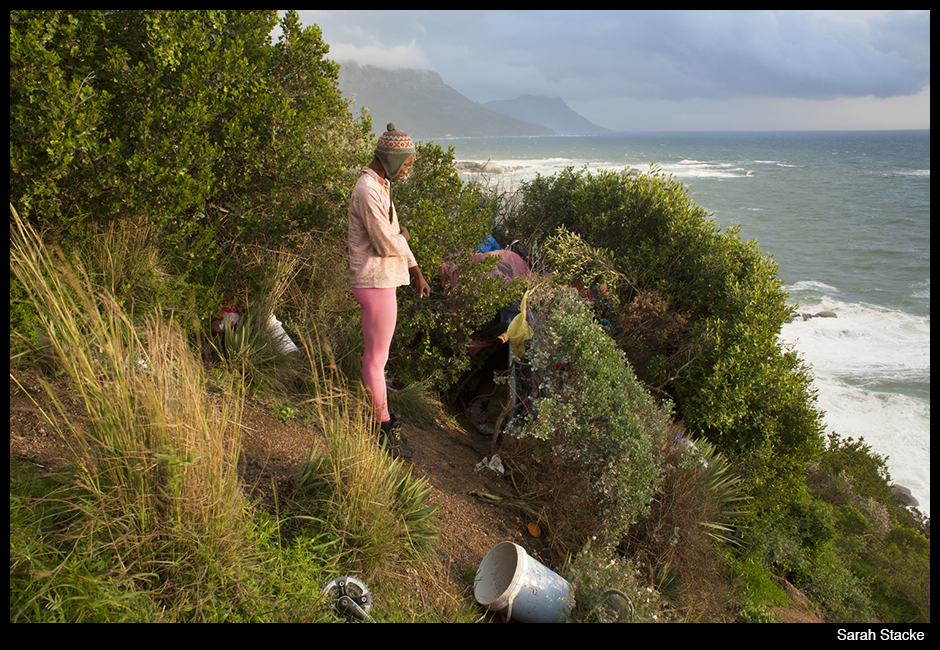
Tsitso, Naomi’s former boyfriend, built this makeshift tent on a hard to reach cliff between Sea Point and Camps Bay after tiring of frequent police harassment at their previous location near the Sea Point Promenade.
When I began photographing Naomi she was 25 and still searching for a sense of freedom, of control. She was living inside a makeshift tent with her then-boyfriend, Tsitso, in an affluent neighborhood of Cape Town called Sea Point. She checked in with her family when she felt like it, sometimes every other week, sometimes not for months at a time. Naomi survived on the streets through sex work and boyfriends that supported her.
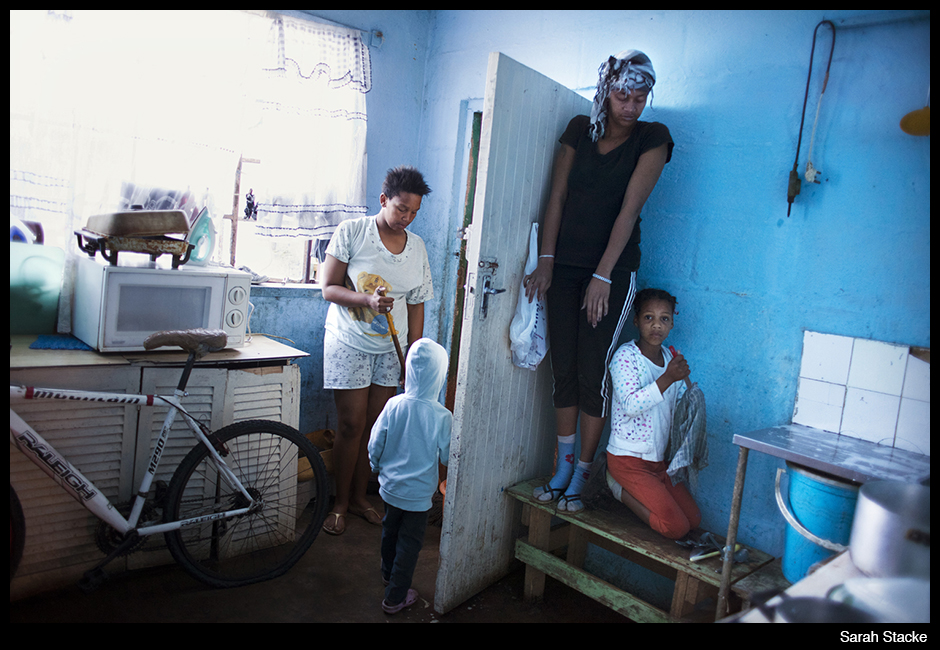
Debby and Naomi with two stepsisters at home in Manenberg.
She wondered why I was so interested in her life, and I told her because it looked like mine in so many ways.
The paradox of Naomi’s story and my own, which are both the same and very different, bound by a common human and female experience yet set apart by circumstance, moved me to look deeper. When I did, I discovered a community of women that have become the foundation of Love From Manenberg.
Our lives, and by that I mean all of our lives, are complicated, messy and meaningful. I connect on so much with Naomi, her family, and the other people I photograph in Manenberg – the worry and joy of parenting, care for our own parents, the desire to belong and to love, the consequence of choice, the pain of loss. I wish I could tell you those connections were my jumping off point for the photographs you see in Love From Manenberg. In truth, I wanted to know more about a country’s history and lifestyles I didn’t fully understand. Naomi and her family were brave enough to share their lives with me; it is because of them that this story has evolved to a place where it is about us.
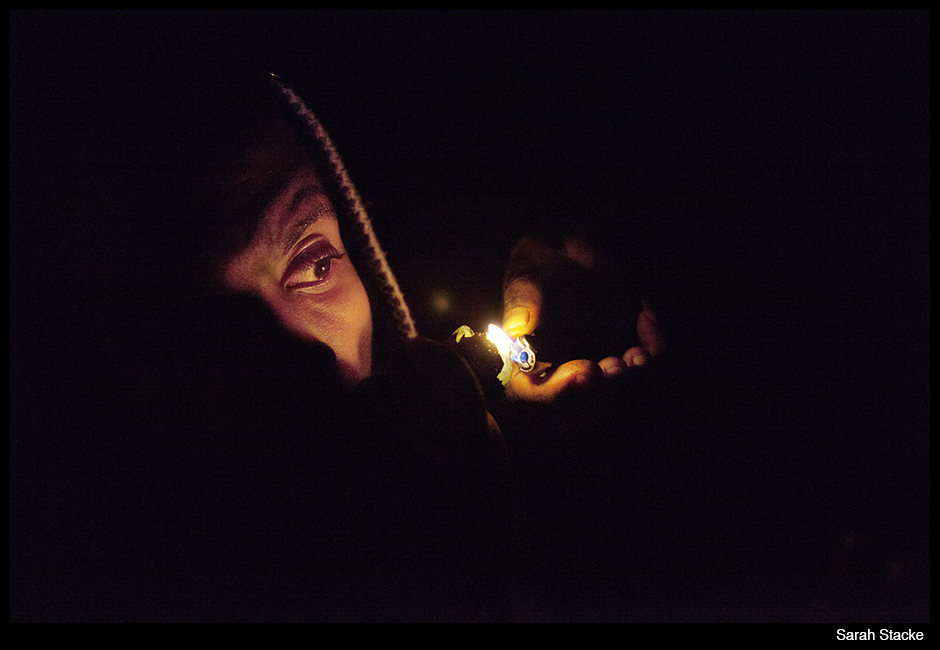
A friend who goes by the name “X” smoking tik inside Tsitso’s makeshift tent.
Poverty, drug abuse, gangs – they appear in the images because they exist in the lives documented, but people are infinitely more complicated than the facts of those things. In the coming months I’ll share stories of the experiences, challenges, and choices that I navigate in the formation of these relationships and this ongoing story.
Text and photographs by Sarah Stacke.
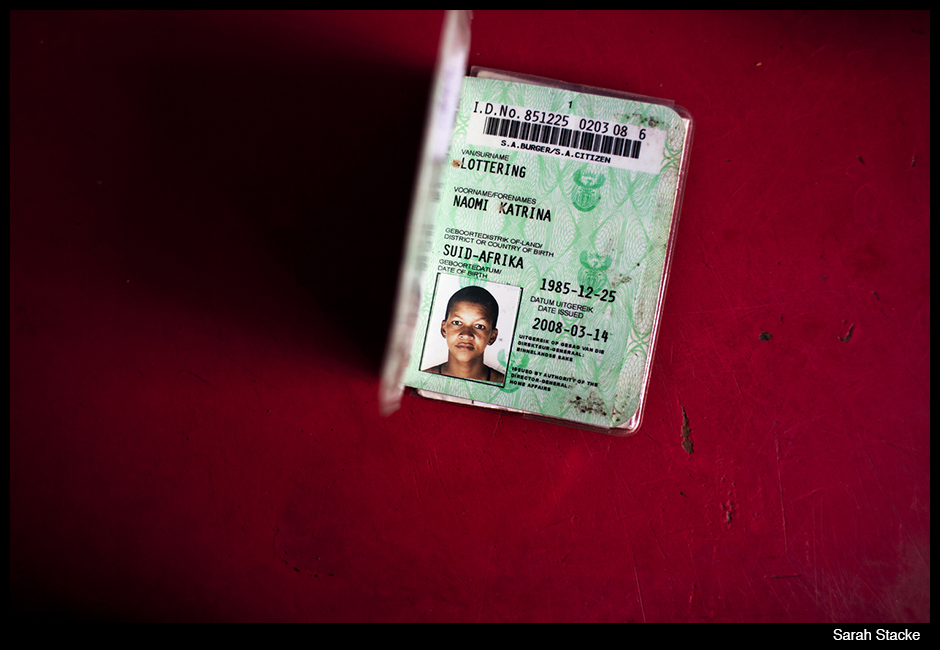
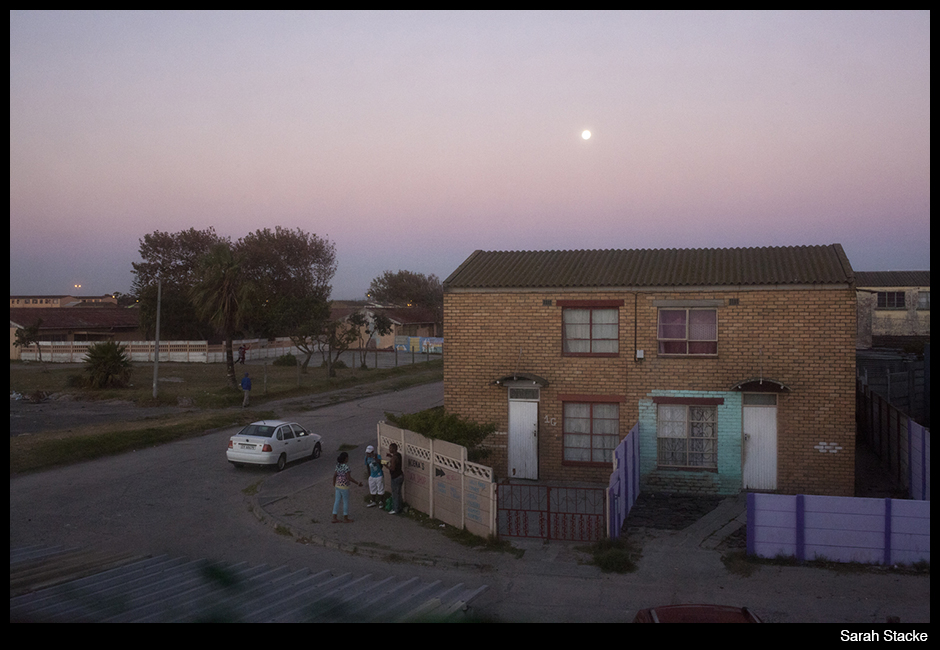
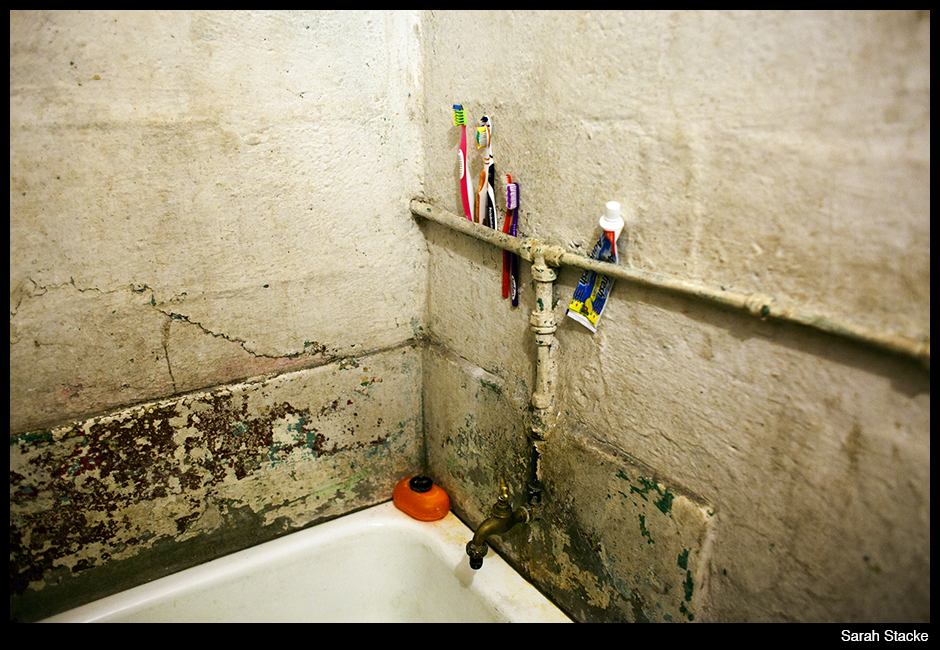


Reactions
Comments Powered by Disqus